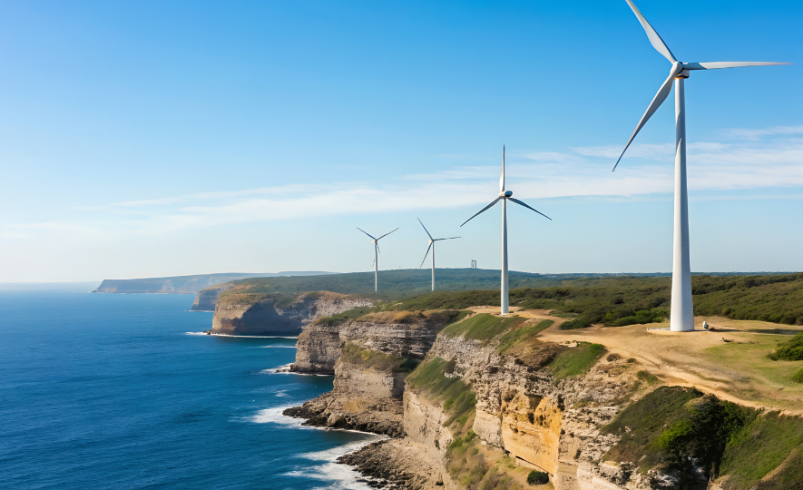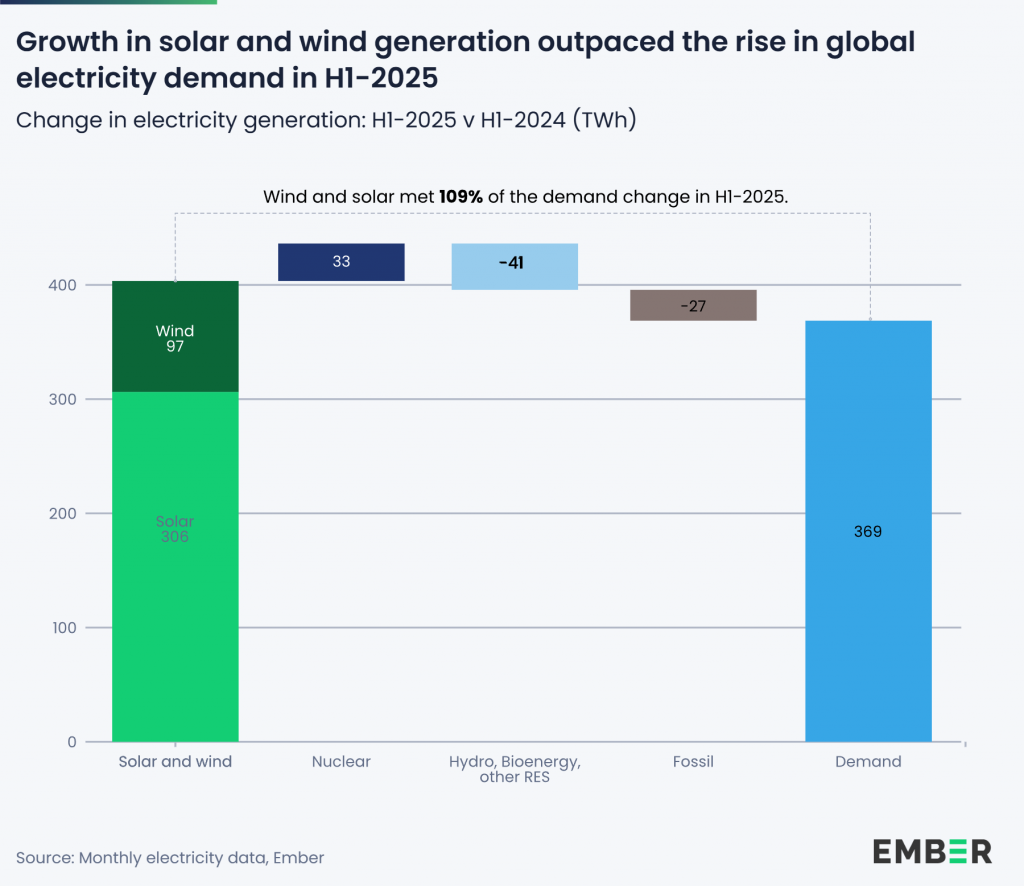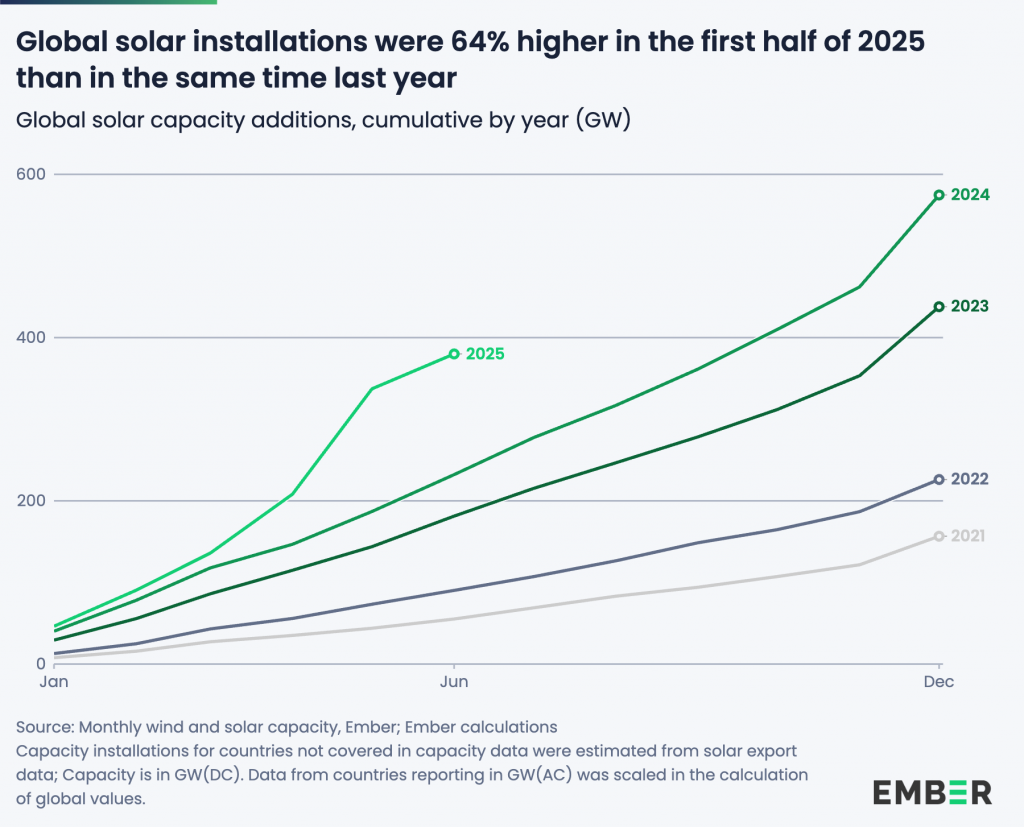Renewables eclipse coal for the first time globally, Asia powers ahead
- October 12, 2025
- 0

Asia is driving a historic turning point in the world’s power systems, as record solar and wind generation pushed renewables past coal for the first time in global electricity history.
The milestone, revealed in Ember’s Global Electricity Mid-Year Insights 2025 released on October 7, shows that clean power is no longer a marginal player—it is reshaping the global energy order, led by Asian economies that are now outpacing the West in renewable expansion.
According to the report, which analyzed data gathered for 88 countries from over 70 sources, China accounted for more than half of the world’s new solar generation and 82% of wind growth in the first half of 2025. India followed with record clean energy gains, while fossil fuel use in both countries declined. Together, they anchored the global trend that saw renewables climb to 34.3% of total generation, surpassing coal’s 33.1% share for the first time on record.
“Solar and wind are now growing fast enough to meet the world’s growing appetite for electricity,” said Małgorzata Wiatros-Motyka, Senior Electricity Analyst at Ember. “This marks the beginning of a shift where clean power is keeping pace with demand growth.”

Globally, solar generation rose 31% (+306 TWh) in the first half of the year—its fastest expansion ever—while wind grew by 7.7% (+97 TWh). These gains met and exceeded the 2.6% rise in electricity demand, keeping global CO₂ emissions flat despite economic and population growth.

The report calls the moment “a pivotal shift,” showing how falling technology costs and large-scale investments are redefining power generation across continents. In contrast to earlier transitions driven by Western policy, today’s momentum comes from Asia’s industrial scale, manufacturing capacity, and sheer energy demand.
Sonia Dunlop, CEO of the Global Solar Council, described the trend as “a historic shift,” urging that “governments and industry must accelerate investment in solar, wind, and battery storage, ensuring that clean, affordable, and reliable electricity reaches communities everywhere.”
For emerging economies like the Philippines, where solar and wind remain underdeveloped despite abundant resources, Asia’s surge offers both a blueprint and a warning. China’s 380 GW in new solar capacity in just six months shows the pace now possible; India’s rapid diversification underscores the economic upside of early transition.
What’s your take? Can APAC and the Philippines keep pace with this global energy shift? How can the Philippines leverage Asia’s momentum to strengthen its clean energy transition.
Follow Power Philippines on Facebook and LinkedIn or join our Viber community for more updates.